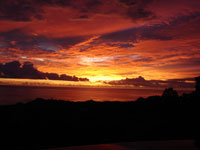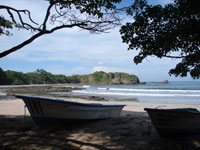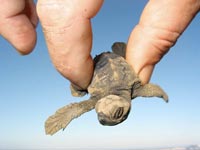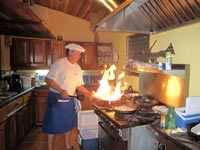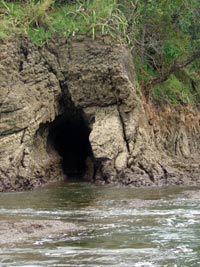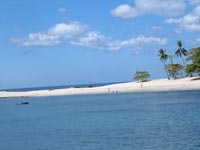BOSQUE VERDE FEATURED IN BOOK
The 8th edition of the Costa Rican guide book, "Choose Costa Rica" by John Howells, has a section on Bosque Verde and its developers, Julio and Barbara Batista.
The new edition, available after November 1, 2006, is arguably the best guide for those looking to retire or invest in Costa Rica. It offers insight innto the cost of living, medical care and safety, and tips for exploring, finding enteratinment and dining on Costa Rican specialties.
Here's the excerpt:
The term property development usually stirs negative images in the minds of long-time Costa Rica residents. They picture a group of profit hungry investors who have one goal: maximize profits. If primary forest, mangrove wetlands, or wild animals get in their way, no problem. These kinds of developers show no conscience as their project destroys the environment. The only thing of vital importance to is getting the highest return for the lowest cost.
Those who live in Costa Rica for any length of time will understand what I'm saying. We've seen foreign companies--Spanish, German, North American--come in with bulldozers and chain saws to clear building sites and construct homes for wealthy foreigners. Lay waste to the countryside and invade the beaches. The biggest offenders are those who have the most money and thus have 'pata' or connections with local authorities. Big developers can afford to hire plenty of workers to speed up the process of transferring pristine beaches into gated golf courses and luxury homes. Local authorities are sometimes intimidated by wealthy and powerful corporations, and often are backed down when they try to control development.
It doesn't have to be that way, and not all developers are that way. A notable exception is the Bosque Verde development on a low mountain near the Pacific Coast village of Nosara. The developers, Julio and Barbara Batista, are originally from Phoenix, Arizona. Neither Julio nor Barbara had previous experience in land development or anything connected with real estate. Julio was an engineer working for Honeywell on the International Space Station, and Barbara an educational consultant working with schools in Arizona.
This all changed when the Batista's first visited Costa Rica 12 years ago (after reading an early edition of Choose Costa Rica). They fell in love with the Beaches of Nosara region. They bought a lovely house with an ocean view and plenty of trees, where bands of howler monkeys, iguanas, and flocks of tropical birds compete for human attention.
By accident, they discovered a Tico family interested in selling their family farm. It was perched on a low mountain top with fantastic views of the Pacific Ocean and coastline. Julio and Barbara couldn't resist. Heavily forested and not farmed for many years, the 285-acre property had become a veritable wildlife refuge.
They planned to build a new home on the very summit of the property. When they began looking into the expense of installing electric power lines, digging wells and building three pumping stations to bring water up to the building site, they realized that they were looking at several times more money than they paid for the land. A natural solution was to subdivide the property into building lots and amortize the cost of the infrastructure among those who bought building sites. Each lot had ocean views, yet were out of sight from neighboring lots.
Most developers would, at this point, begin selling lots to buyers, giving flowery promises of future water and electricity--a fast way to raise money to begin development. Julio and Barbara didn't care to do this. They decided not to sell even one building lot until water and electricity was in place, ready to start construction. They didn't want to disappoint buyers in the event that they couldn't come through with the promised utilities. When laying out the building sites, they made sure that each home would have maximum privacy from other homes. Even though it's a gated community, residents get the feeling they are the only inhabitants overlooking the Pacific.
They hired a Costa Rican forestry and tropical plant expert and proceeded to plant thousands of trees, shrubs and vines. Sixty percent of the land is dedicated as an ecological easement for residents to enjoy, thus protecting the natural ecosystems from further development.
Being an engineer, Julio used his expertise to oversee the construction of the roads, culverts, electrical distribution, and water systems. Finally, after drilling wells, designing and building water-pumping stations, and bringing water to every home site, Bosque Verde was ready to begin selling building sites. All of the above took eight years of intensive (and expensive) work. But it was finally completed last year (in 2005). Julio says, "We feel very good about what we have achieved. We used our retirement money to create an ecologically friendly community where we can live with like-minded adventurers. It has been a creative journey."
Almost the moment the building sites were put on the market one couple bought two of them---one for their home and one for future investment. An entry with lagoons and gardens for beauty and a gatehouse for security are under construction.

